Glossary
This glossary provides explanations for terms and concepts commonly used throughout the project. It also aims to support a shared understanding and collaboration, aligning with the principles of Open Science.
The glossary is organized alphabetically. Terms that include illustrations are particularly relevant to the Cancer Prevention at Work project.
Please review the concepts listed below and feel free to download and use the accompanying icons.
Carcinogen
1st Level
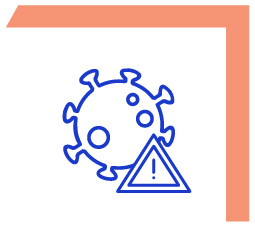
Cancer
1st Level

Cancer prevention
1st Level

Cervical cancer
1st Level
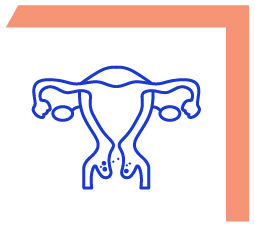
Cost-effectiveness of the interventions
1st Level

Genital HPV
1st Level

There are over 190 different types of HPV, and 40 of them affect the anogenital area.
HPV Types 16 and 18 cause about 70 % of cervical cancer cases.
HPV Types 6 and 11 cause about 90 % of genital warts cases.
Health and safety program
1st Level

A systematic combination of activities, procedures, and facilities designed to ensure and maintain a safe and healthy workplace.
Health capital
1st Level

Helicobacter pylori
1st Level

Helicobacter pylori eradication
1st Level
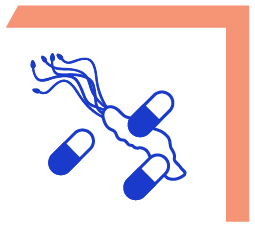
Helicobacter pylori chronic infection
1st Level
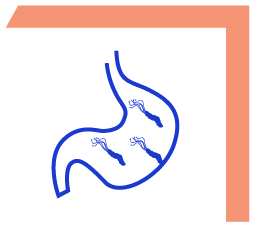
Chronic infection with H pylori causes atrophic and even metaplastic changes in the stomach, and it has a known association with peptic ulcer disease. The most common route of H pylori infection is either oral-to-oral or fecal-to-oral contact via water or food consumption.
Helicobacter pylori diagnosis
1st Level

Hepatitis C prevention

There is no effective vaccine against hepatitis C. The best way to prevent the disease is to avoid contact with the virus.
Extra care should be used in healthcare settings and for people with a higher risk of hepatitis C virus infection.
People at higher risk include those who inject drugs, men who have sex with men, and those living with HIV.
Ways to prevent hepatitis C include:
- safe and appropriate use of healthcare injections
- safe handling and disposal of needles and medical waste
- harm-reduction services for people who inject drugs, such as needle exchange programs, substance use counselling and use of opiate agonist therapy (OAT)
- testing of donated blood for the hepatitis C virus and other viruses
- training of health personnel
- practicing safe sex by using barrier methods such as condoms.
HPV vaccines
1st Level
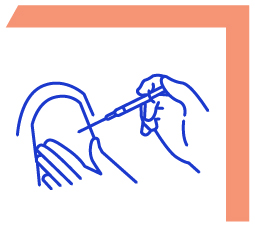
HPV treatment and care
1st Level

Human paillomavirus infection

Impact
1st Level

Occupational risk
1st Level

The likelihood of a harmful effect such as an accident or occupational disease occurring within a specified period or in specific circumstances such as during or after specified exposure. It may be expressed either as a frequency, such as the number of harmful e ects in a certain time period, or as a probability, such as the probability of a harmful e ect during or after exposure.
Occupational disease
1st Level

Occupational cancer
1st Level

Virus potentially related to cancer of the cervix, head and neck and anogenital organs
1st Level

Human papilloma virus (HPV) is the most common sexually transmitted disease in the world. Almost 80% of the world’s population is exposed by the age of 50. HPV can cause oropharyngeal, genital, and anal cancers. It also causes genital warts. There is no cure for HPV but vaccines are available to prevent infection by the most common HPV viruses; unfortunately, usage is low. Most people will clear HPV spontaneously. Those who do not are at high risk for developing malignancy. Treatment mainstays are destruction and excision of the lesions. Hathaway et al 2012.
Workers’ health surveillance
1st Level

Workers’ health surveillance is a generic term which covers procedures and investigations to assess workers’ health in order to detect and identify (early) signs of abnormality. The main aim is the prevention of occupational and work-related diseases and injuries. The results of surveillance should be used to protect and promote the health of the individual, collective health at the workplace, and the health of the exposed working population. Health assessment procedures may include, but are not limited to, medical examinations, biological monitoring, radiological examinations, questionnaires or a review of health records. Preferably the starting point is a risk assessment at the workplace to identify a health hazard or risk.
Workplace
1st Level

Any place where physical and/or mental labour occurs, whether paid or unpaid. This includes formal worksites, private homes, vehicles, or outdoor locations on public or private property.
Barriers and facilitators for implementation
2nd Level
Microbiological agent
2nd Level
Biological carcinogenic agents
2nd Level
EMA – Gardasil 9
2nd Level
– precancerous lesions (growths) and cancers in the cervix, vulva or vagina, anus and oropharynx;
– genital warts.
Implementation outcomes
2nd Level
Implementation science
2nd Level
Implementation strategies
2nd Level
Incapacity for work
2nd Level
Laboratory Testing for HPV
2nd Level
OHS – Occupational health and safety
2nd Level
Risk assessment
2nd Level
Risk Identification: process of finding, recognising and describing risks;
Risk analysis: process to comprehend the nature of risk and to determine the level of risk;
Risk evaluation: process of comparing the results of risk analysis with risk criteria to determine whether the risk and/or its magnitude is acceptable or tolerable.
Under health and safety laws, all employers must carry out regular risk assessment.
Workers health surveillance
2nd Level
Workplace Health Promotion (WHP)
2nd Level
• improving the work organisation and the working environment
• promoting active participation
• encouraging personal development
Chronic effect
3rd Level
Hazard
3rd Level
Healthy Healthcare (HHC)
3rd Level
IARC
3rd Level
Personal Protective Equipment (PPE)
3rd Level
Public health intervention
3rd Level
Vaccine efficacy
3rd Level





